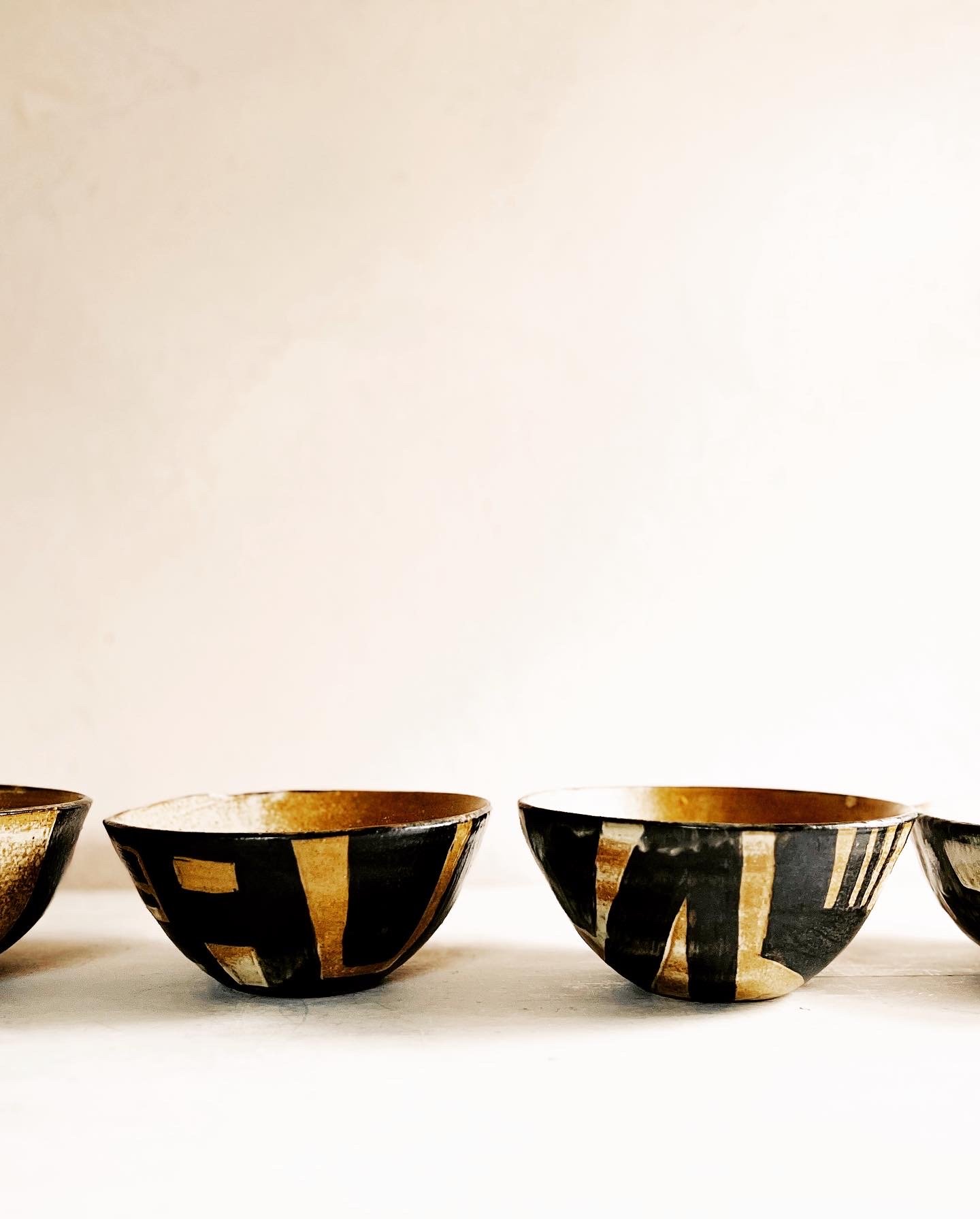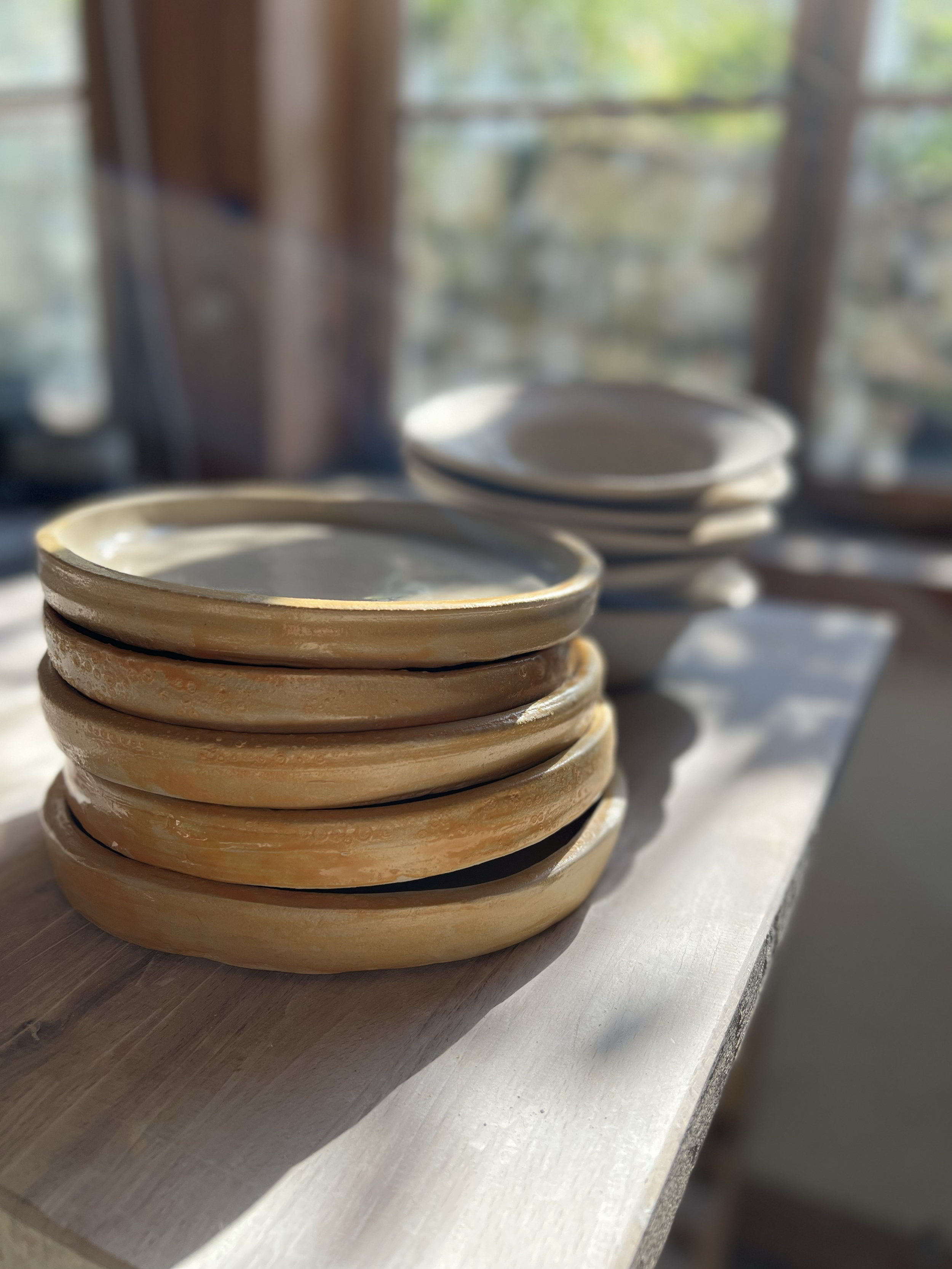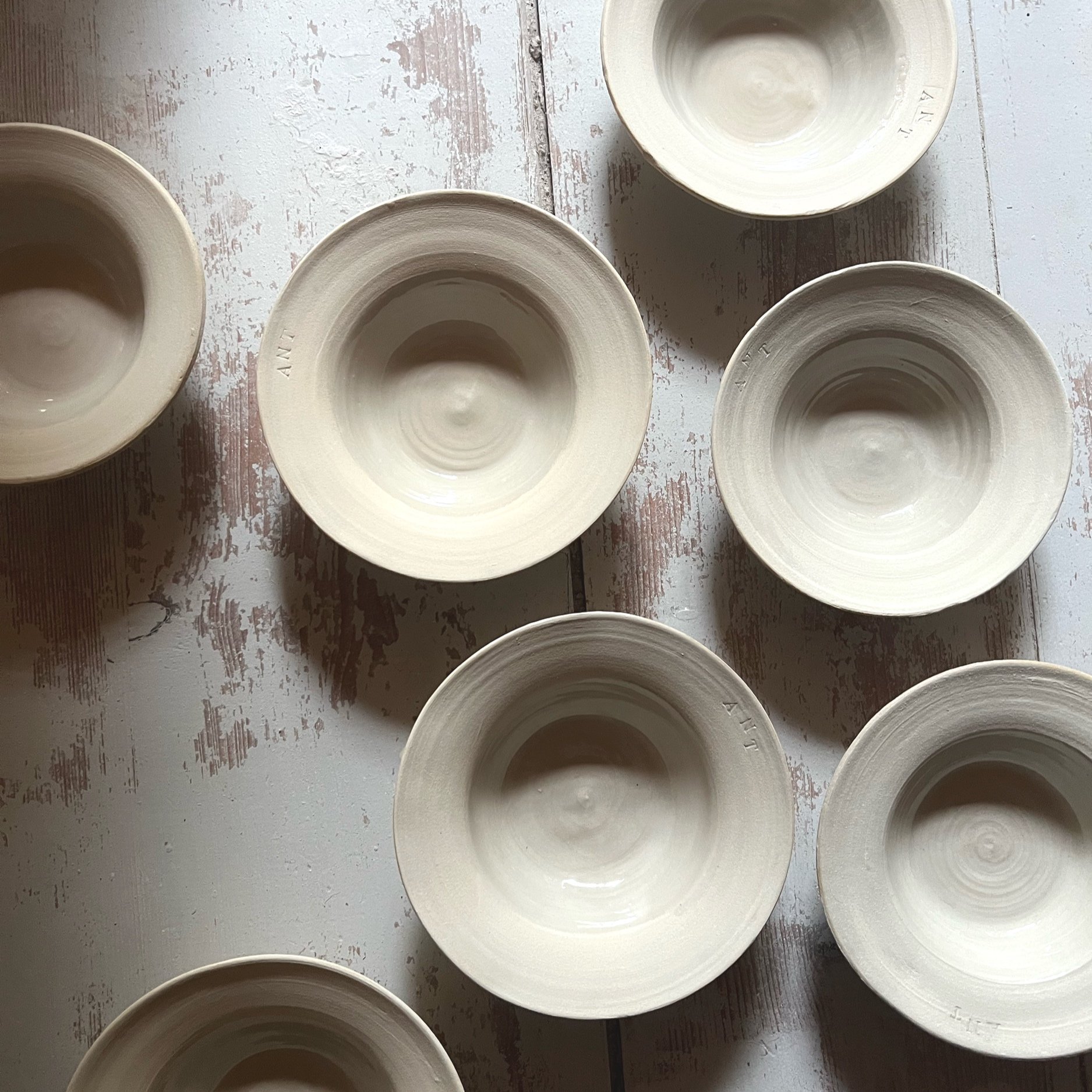Calling All Creators
I spend a great deal of time in creative mode, meaning I am either creating, or thinking about creating, or researching creative people and their inspiration. This is what keeps me informed and current on what’s going on just about everywhere, a fact that amazes me as I sit in my Black Forest village of 320 people surrounded by farm animals and pine trees.
Creative people eat information like candy bars. They process it and see where and how they might apply it to their work. This is what we use social media for - as an exploration tool.
I work on simultaneous projects, and one thing I’ve noticed as I have moved deeper into the creation space is that I am now seeing a thread that connects all of them. This is how I know that at the young age of 64, I’m acheiving what I set out to do 26 years ago when I embarked on my personal creative journey. My work, be it room design, ceramic design, art, table setting, or cooking is starting to sing out of the same hymn book. I never thought that would happen, but it has.
It’s taken a hell of a long time. But I finally see what’s mine and what’s not mine in the creative spectrum. Being here in the country side has done that. Listening to my inner voice and working on my own internal stuff has done that. It’s a journey, one I will continue as long as I have the ability to do so.
So how does it work? How do we get to the point where we know what’s ours creatively and what’s not?
One part is the what. I cannot overemphasise that this can be the longest, most expensive and frustrating part of the entire process. Finding the motivation, buying the required materials, trying, failing, and putting it to the side. Then picking it up again, either out of fortitude or just being pissed off at having spent the money, trying again, until either it’s a definite no or an absolute maybe (which is the thread to follow).
A big part of the what is researching. Instagram, Pinterest, and wherever you see things that catch your eye and spirit. What colors hit you? What styles? What makes your heart beat just a little faster? If you want to create, what kind of setting do you see your creation as part of? Listen, write, feel into your own sense of beauty.
An additional factor is the why. Why do I want to this? Do I have the space, time, money and desire to make another chasm in my day and allow this work to come through? How badly do I want this? Or is it actually a need? Because if it is a need, we find the time, and somehow at least the seed money to start the process moving forward.
Along with the why, it’s doing the work (the practicing, the searching, the diving in to what turns you on) of learning what this work means for your life. It’s maybe a small, enjoyable escape. It might become more than that.
Then there’s dedication to the how. Repetition is the way we learn to hold onto a skill and understand fully what is our special creative power. The first time we create something that works (in our own mind), we reinforce the skill by repeating it.
The difference between a hobbyist and professional isn’t necessarily passion, but rather dedication to repetition and skill building. This turns some people off - it’s too much work. That’s ok. Not everyone needs to turn their creativity into a side hustle or major career. Doing something for sheer pleasure is great!
For some people, though, there’s a hook they can’t let go of, and their passion becomes so much more. For these people, honing skills and understanding the how is indispensable.
Repetition fortunately doesn’t bother me. Rather, since I have ADHD, it calms me. It forces me to be present and to focus. I credit pottery to helping me understand how to untangle my mind to a great extent. It’s helped with my mental health.
Oh yes, and the where. When you start the process, the where might be your kitchen table. But pretty soon, you’ll outgrow the desire to put everything away all the time when you’re deep into your work. My friend Lindsay Emery, one of the top ceramic designers in America, started out throwing pots for Suite One Studio in her kitchen. Yes, her kitchen. She eventually moved into a dedicated space, but her desire to create and grow was so huge, she used what she had at the start.
My advice is to start with what you have and then see where the process takes you. You don’t want to over invest overnight, and you don’t want to contain yourself into an inappropriate space forever. Organic growth means being patient but also listening to your inner voice about what works and what doesn’t.
I hope this helps you to start to understand where to plant the seed to unleashing your own personal sense of style. Believe me, the world needs you and your creativity.
I invite you to subscribe to my mailing list to receive more essays on creativity and the process of bringing beauty into the world!




